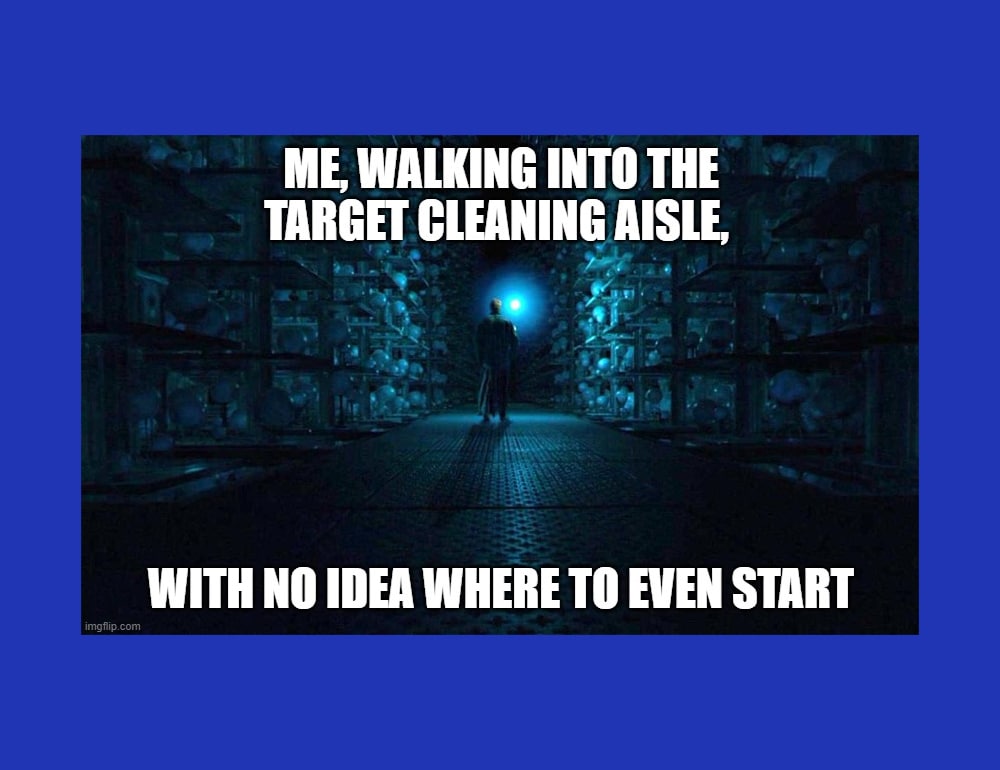
How to Shop for Green Cleaning Products without Losing Your Mind
by Rhys Jones, Two Bettys Product Manager
March 1, 2021
It’s a Saturday afternoon, and you’re at Target. Why, oh why, you ask yourself, did you think Saturday would be a chill time to go to the secondary Great Minnesota Get-Together that is Target? But no matter: you’re on a mission. You blast past the registers, clearance sweaters, and makeup displays seemingly assembled to market to you specifically. No distractions! You’re here for cleaning products.
You finally reach the cleaning aisle—and all at once you become overwhelmed with the sheer number of products, a cacophony of color and weird branding, and a mix of scents that you know are just chemicals even though you’re supposed to think they smell like flowers. You’re just trying to whip your bathroom into shape, not climb the Mt. Everest of spray bottles. Where do you even start?
Know Before You Go
Before you set foot in the store, ask yourself:
What are you cleaning and how gnarly of a mess is it? This will help you narrow the scope of cleaning products. If you’re trying to make your couch smell less like your 65-lb.pit bull mix, you don’t need to think about scouring powders. Stay focused on what you’re there for.
Any allergies to consider? Many cleaning products are scented, and sometimes those scents can trigger allergic reactions. I’m allergic to lavender—while it offers calm and soothing to most people, it triggers migraines and gut rot for me—two very different experiences. Products containing bleach can also be highly inflammatory for people with respiratory issues.
Don’t Get Greenwashed
“You can’t just make up words, Rhys.” First of all, I do what I want, and secondly, I promise I’m not making this one up. “Greenwashing” is when a company uses buzzwords, colors, and branding to make you think you’re buying green, eco-friendly products, when in reality you’re just buying the same sketchy chemical concoction that’s been on the shelves for years. Only now it’s wearing a green floral dress and calling itself Mrs. Natural Mostly-Vegan Pine Breeze. Did you know that there’s zero regulation around using “green” and “natural” in cleaning products? None. Which leaves it up to you, the discerning consumer, to figure it out. Which leads us to…
Look for Third-Party Certification
Wanna know something weird? The U.S. government doesn’t require companies that make household cleaning products to list all the ingredients on the label.
The only ingredients the EPA does require companies to disclose are the ones that disinfect and/or have been proven to be toxic, like formaldehyde or bleach. So traditional cleaning products contain a lot of questionable ingredients you wouldn’t want to inhale—and most of these aren’t listed on the label.
The EPA doesn’t hold cleaning product manufacturers fully accountable for what they put in their products, but there are some third-party certifications that do. These include the USDA BioPreferred Program, and US EPA SaferChoice and Green Seal. If a product has one of these certifications, you can trust that the cleanser meets high health and safety standards for both people and the planet.